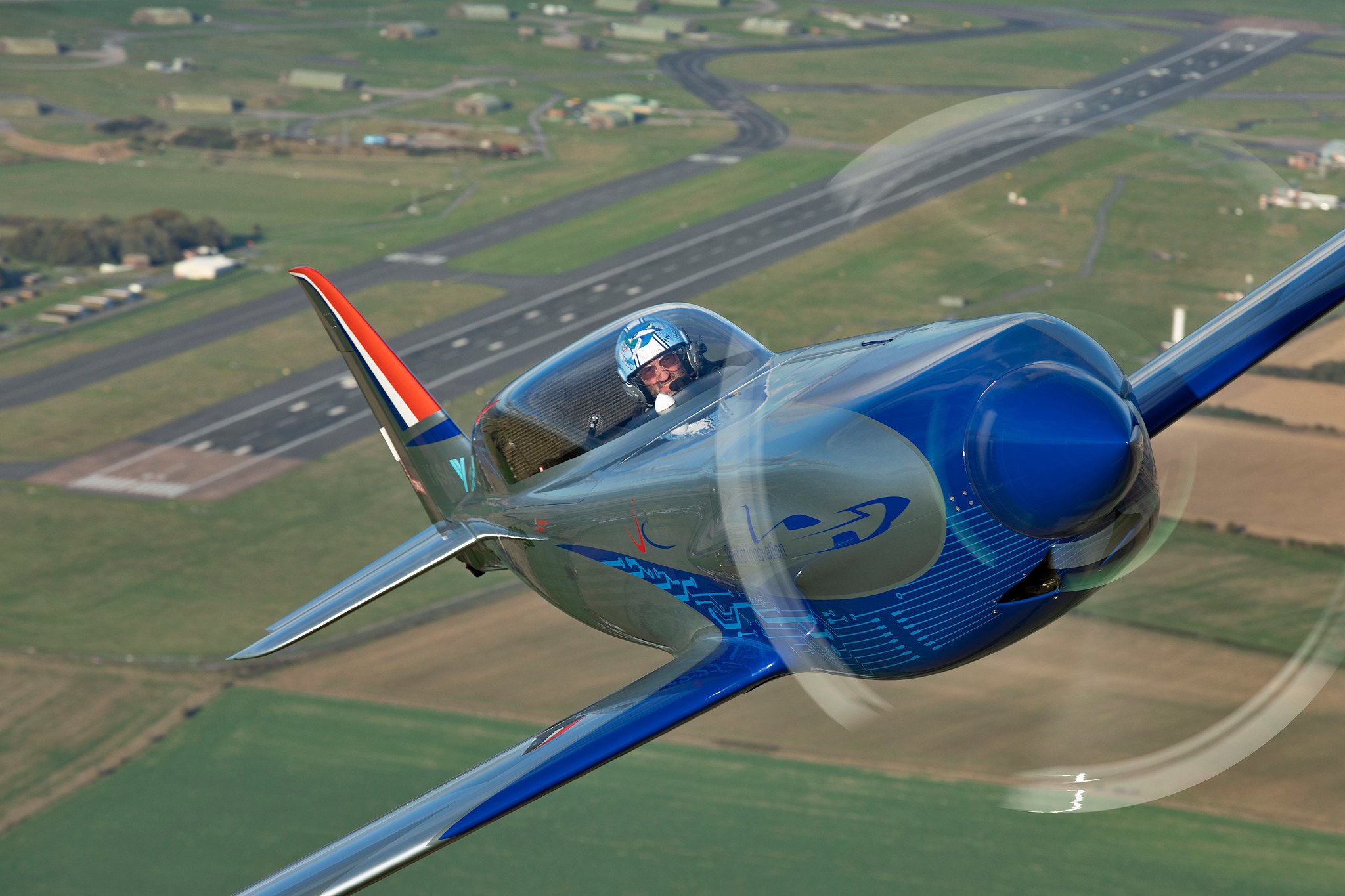Click Here to View This Page on Production Frontend
Click Here to Export Node Content
Click Here to View Printer-Friendly Version (Raw Backend)
Note: front-end display has links to styled print versions.
Content Node ID: 419542
Following its acquisition of Siemens’s electric and hybrid-electric aerospace propulsion activities in 2019, Rolls-Royce Electrical was formed in January as a business unit focused on developing electric aircraft propulsion and storage systems. The company exhibited for the first time at the recent Aero Friedrichshafen in Germany.
This year’s show was the first since the Covid pandemic forced the event into hiatus in 2020 and 2021. During that time, Rolls-Royce Electrical was developing energy storage and propulsion systems designed for the nascent urban air mobility market.
The Rolls-Royce exhibit at the show included details about the Spirit of Innovation, the world’s fastest electric aircraft, which was developed as part of the UK-funded Accel project, and participation in the EU-funded H3PS hybrid-electric project. Attendees could also view a cutaway view of Rolls-Royce’s battery for electric aircraft, which is designed to facilitate flights of up to 100 nm and will be ready for the market in 2025 or 2026. Its hybrid-electric turbo-generator, using a turbine engine to drive an electric generator, will be demonstrated later this year, according to customer director Matheu Parr, and will be available in 2025 or 2026.
In December, a Tecnam P2010 conducted flight tests of a Rolls-Royce/Rotax hybrid-electric propulsion system, as part of the H3PS program. The flights showed a consistent 20 percent fuel saving, according to Parr. Work continues with Tecnam and Norwegian airline Widerøe on the P-Volt program, an all-electric version of Tecnam’s 11-passenger P2012 commuter airplane, which is expected to provide short-range (100-nm) flights beginning in 2026.
Much of the research that resulted in the Spirit of Innovation, a modified Nemesis NXT experimental airplane that can reach 388 mph, informs future electric products that Rolls-Royce is preparing for customers. The speedy airplane carried 6,000 individual battery cells wire-bonded together, creating enough energy to power 200 homes during the eight-minute record flight, according to Parr. “This was the fastest electric vehicle on the planet.”
The previous electric-speed record was set in 2012 by Chip Yates flying at 202.6 mph in his Long-ESA experimental airplane. “In 2021, we went more than 100 mph faster,” Parr said. “It demonstrates how fast this technology is moving.”
The challenges involved weren’t just how to wire the batteries and make the electric propulsion system work, he explained, “but how to get that much energy on an aircraft and how to discharge it” as the airplane flies. Generating that much thrust means batteries get hot, and they must be cooled to prevent damage. Liquid cooling was used for the Nemesis build and the entire system was managed to deliver maximum power so that at the end of the mission, the battery was nearly as hot as it could possibly get without damage.
Of course, Parr pointed out, this wouldn’t work for normal aircraft operations, and Rolls-Royce’s work on electric propulsion includes figuring out how to keep batteries cooled efficiently. The modular battery system on display is air-cooled.
Rolls-Royce customers are preparing their products for final design stages and certification, and Rolls is at the same time readying propulsion and battery systems for some programs. UK-based eVTOL aircraft developer Vertical Aerospace will be one of the first companies to receive electric propulsion unit (EPU) and distribution system hardware from Rolls-Royce, and shipments of these products will begin later this year. The equipment will run in Vertical’s iron bird systems test bench initially, and in the aircraft for flight testing by the end of next year.
Rolls-Royce has a strategic partnership with Embraer’s Eve and will supply hardware for that program, including the EPU and distribution system as well as batteries. “Our role is to integrate these products in an airworthy, safe package,” Parr said.
The battery system that Rolls-Royce has developed is a 12-kW modular unit that can be stacked to provide various levels of power. Monitoring the battery is an important element, too, as are thermal management and maintaining efficient battery operation as it depletes during each high-demand power cycle such as during takeoff. “We have a lot of experience in monitoring,” he said.
Also on display at the company's Aero Friedrichshafen exhibit was Rolls’s containerized storage system, which enables battery charging at airports without robust electrical infrastructure. Parr expects airport fixed-based operations to take on the role of electric aircraft charging, and containerized storage would be the easiest way to make that possible. For sustainable energy, airports could charge the storage units using local wind or solar microgrids. “Containerized storage gives them scalability,” he said. Eventually, the storage systems could switch from batteries to fuel cells, which would be more efficient.
All this activity means that Rolls-Royce Electrical needs to grow quickly. Today, the company employs 450 engineers, and the number will grow to 600 by the end of this year, Parr said, adding, “We’re introducing new technology into aerospace.”
